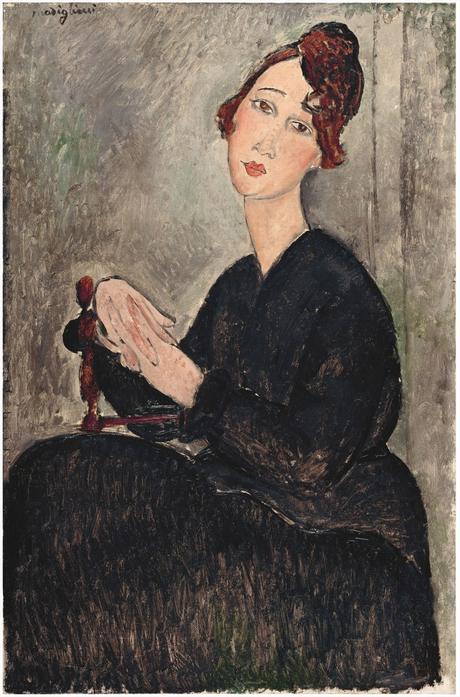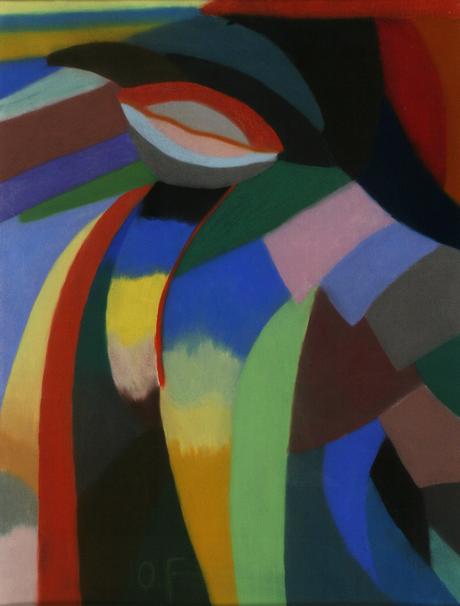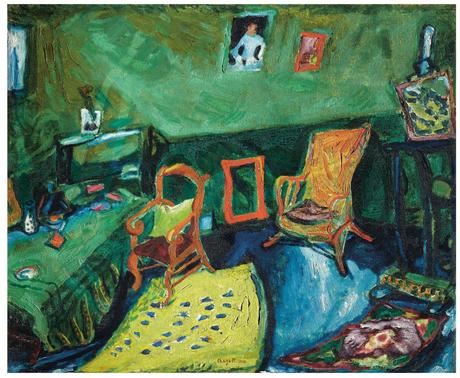I have been thinking about identity a lot recently.
Susan Sontag's diaries reveal how she constantly recreated herself. Like setting out to be less charming and more serious.
Don't smile so much, sit up straight...and above all Don't Say It, all those sentences that come ready-to-say on the ticker-tape at the back of my tongue.
Susan Sontag, Reborn: Early Diaries 1947-1964
Sontag plays with different versions of herself, enabling her to expand as an essayist and writer. A similar impulse is what drew artists from around the world to Paris at the beginning of the 20th century.

The allure of Paris for these artists was the promise of social, religious and political freedom. France was attractive for Jewish people in particular, since the French Revolution gave them more equality there than elsewhere in Europe. It was in the Paris neighbourhood of Montparnasse, where artists gathered at the Café du Dôme, or worked in studio complexes like The Beehive ( La Ruche), that they could expand their ideas about art, and themselves.
Soon after picking up pencil and brush, we started anatomising not just the natural world around us, but our own selves. What exactly were we anyway? What position did we hold amongst the nations? What really was our culture? And what was our art supposed to be like?
El Lissitsky, Berlin 1923
The result of diverse artists coming together in Paris between about 1900 and 1940 was magnifique; it created the School of Paris ( École de Paris) - a term that paradoxically refers to neither a school nor a specific artistic style. Instead, it describes a heterogeneous group of artists working in different styles and mediums, influenced by various movements such as Fauvism, Cubism, and Surrealism. They drew inspiration from Paris itself, as well as from the cultural and intellectual diversity of the artists living there.
A range of work produced by the Jewish artists of this scene is the theme of Paris Magnétique, the current exhibition at the Jewish Museum in Berlin. Consisting of 120 works in ten sections, it includes famous artists like Marc Chagall, Amedeo Modigliani and Chana Orloff as well as lesser known artists.

One of the most striking pieces is Sonia Delaunay-Terk's Prose of the Trans-Siberian and of Little Joan of France ( La Prose du Transsibérien et de la Petite Jehanne de France) from 1913, which captures the innovative energy of the metropolis's art scene. Described as "the first simultaneous book," it is a long sheet of paper filled with colourful illustrations and texts.
Simultanism was a movement that Delaunay pioneered in Paris to reflect the simultaneity of modern life- the fast-paced overlapping of time and space, text and image. Simultaneity could also describe the overlapping of cultures, backgrounds, and religions in the city's art scene.
We place ourselves above all borders. What do we care if a comrade is Jewish, Russian, Black, Chinese or French? [...] Voila: the reasons for the success of Montparnasse.
Géo-Charles, Paris 1921
A collection of lithographies by the expressionist artist Lou Albert-Lasard of the cafes and cabarets, the smoking men and dancing ladies, also captures the swinging, artistic vibe of the city. However, along with this spirit of connection and creativity came an opposing force...

The heterogeneity of the Montparnasse art scene was met with xenophobic and anti-semitic criticism. The French critic Camille Mauclair wrote that it was decadent, socialist and contributed to the decline of French art. As a result of such views, the Salon des indépendants, which usually displayed art works alphabetically or according to style, decided in 1924 to exhibit artists according to their nationality. As a counter to this divisive and exclusionary mindset, the journalist and art critic André Warnod coined the phrase École de Paris or School of Paris in 1925 to embrace this diverse avant-garde.
In curating works from only the Jewish artists of this scene then, Paris Magnétique holds interesting oppositional forces. On one hand it shows the immense contribution to the art world that these artists made; on the other, it demonstrates the immense heterogeneity among this group of artists that it calls into question whether there's even any point in grouping them together. What's chillingly clear, however, is the way that the wars, and obviously especially the pogroms of the Second World War, affected this group of artists. It's heartbreaking to read the artists' birthdates and deaths displayed next to their works, and see how many were murdered in the Holocaust. Here too, however, there is diversity - some emigrated, some survived.
